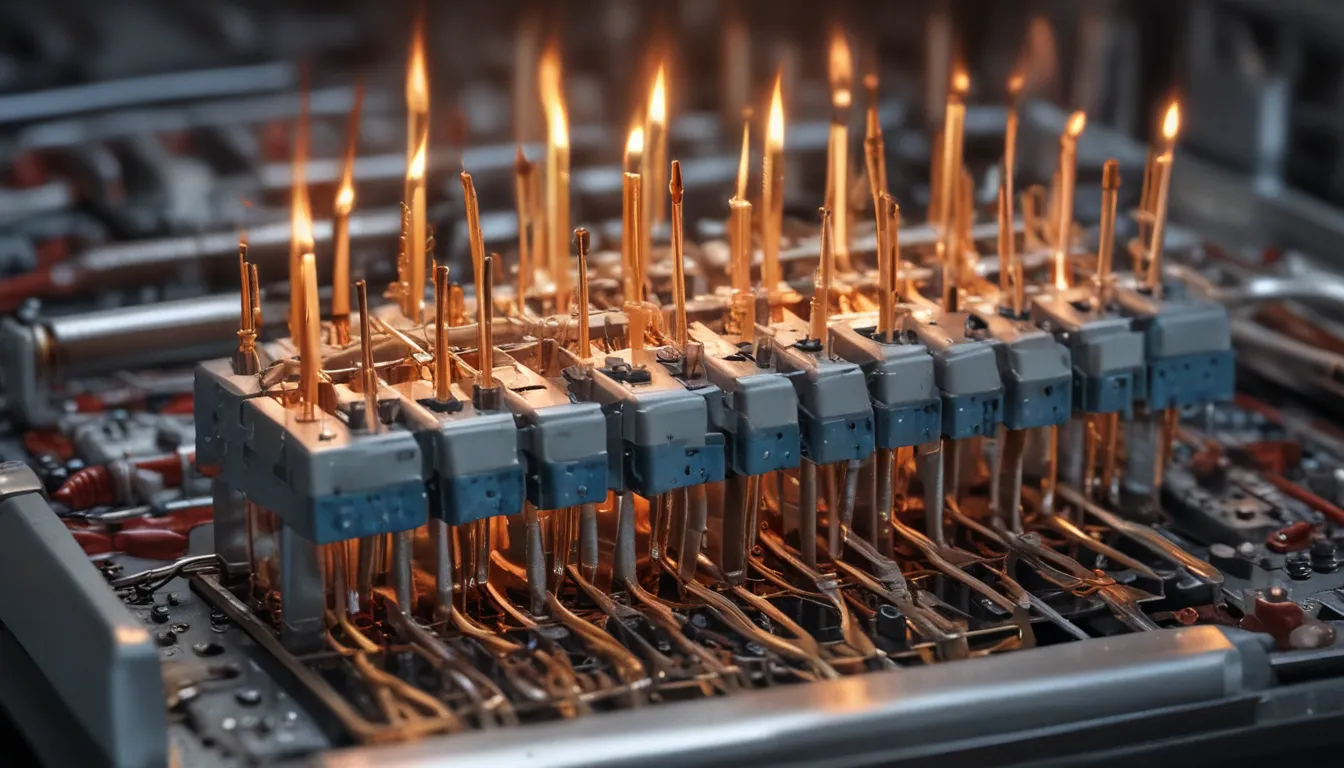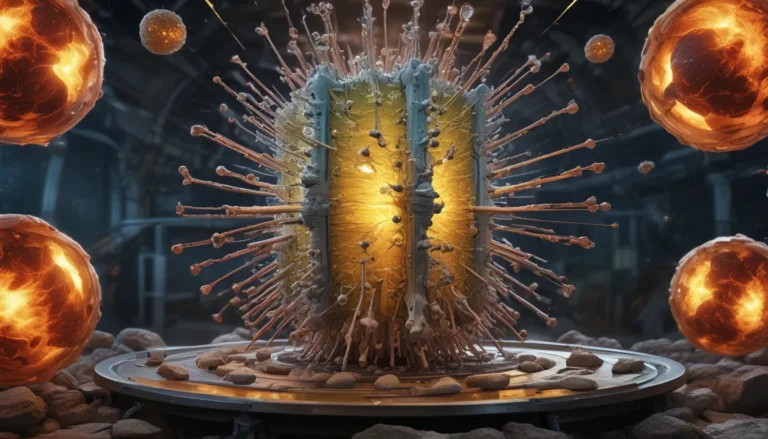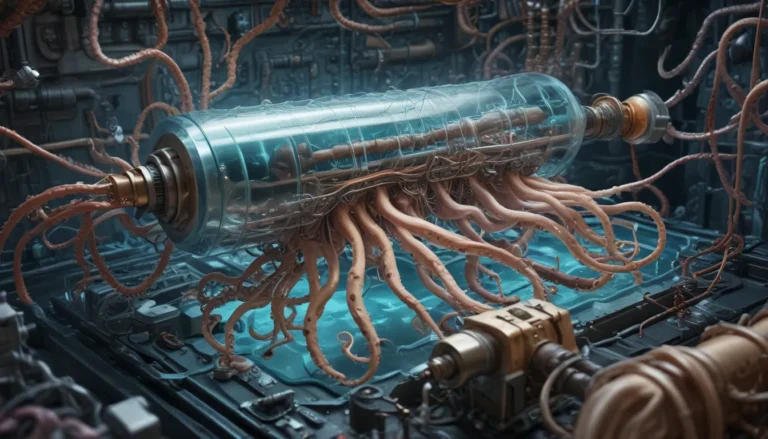A Note About Images: The images used in our articles are for illustration purposes only and may not exactly match the content. They are meant to engage readers, but the text should be relied upon for accurate information.
Thermocouples are remarkable devices with a rich history and significant impact on various industries. They are temperature sensors that have found wide applications in fields such as aerospace, medical devices, and industrial processes. If you are curious about thermocouples and their functionality, this article will provide you with 19 captivating facts that delve into their history, development, and practical uses.
The Origin of Thermocouples
The genius behind the invention of thermocouples is attributed to Thomas Johann Seebeck, a German physicist, who made this remarkable discovery in the early 19th century. Seebeck stumbled upon the relationship between heat and electricity while conducting experiments, leading to the creation of thermocouples.
The Seebeck Effect: The Core Principle
Thermocouples operate based on the principle of the Seebeck effect, where the junction of two dissimilar metals generates a voltage when exposed to a temperature gradient. This voltage is a direct indicator of the temperature difference and is crucial for temperature measurement using thermocouples.
Durability and Wide Temperature Range
One of the key advantages of thermocouples is their ability to measure temperatures over a wide range, from as low as -200°C to as high as 2000°C. This versatility makes them suitable for various industrial applications where extreme temperatures are encountered.
-
Durable Construction: Thermocouples are known for their robust construction, enabling them to withstand harsh conditions such as high pressures, vibrations, and corrosive environments. This durability ensures their reliability in challenging industrial settings.
-
Rapid Response Time: Thermocouples exhibit a fast response time, providing quick and accurate temperature readings almost instantaneously. This feature is crucial for applications requiring real-time monitoring and control.
Types of Thermocouples
There are several types of thermocouples, each characterized by a unique combination of metals. Popular variants include Type K (chromel-alumel), Type J (iron-constantan), and Type T (copper-constantan), each tailored for specific temperature ranges and applications.
Applications Across Industries
Thermocouples find extensive use in industries such as oil and gas, chemical manufacturing, power generation, and automotive sectors. They are instrumental in temperature measurement and control, ensuring efficiency and safety in critical processes.
Thermocouples in Specialized Fields
-
Aerospace Industry: The aerospace sector heavily relies on thermocouples for monitoring and controlling temperature in aircraft engines, ensuring optimal performance and safety during flight.
-
Medical Devices: Thermocouples are utilized in medical devices like thermometers and temperature probes to accurately measure body temperature and monitor patients during surgical procedures.
-
Research and Development: Scientists and researchers utilize thermocouples in laboratories for studying processes involving temperature changes, such as chemical reactions and material testing.
Advancements and Innovations
With continuous advancements in technology, modern thermocouples are evolving to incorporate wireless sensors, miniaturization, and digital interfaces for enhanced functionality and integration with automation systems. These innovations promise even more diverse and innovative applications in the future.
Calibration and Accuracy
To maintain accuracy in temperature measurements, thermocouples require periodic calibration. This process involves comparing their readings against known temperature standards and making necessary adjustments to ensure precise measurements.
Safety Applications
Thermocouples play a vital role in safety systems, such as flame detectors and gas leak detectors, where they provide reliable temperature monitoring to prevent accidents and ensure safety in hazardous environments.
The Future of Thermocouples
The future of thermocouples looks promising, with ongoing research focused on enhancing their accuracy, response time, and compatibility with emerging technologies like the Internet of Things (IoT) and artificial intelligence (AI). These advancements are expected to further expand the applications of thermocouples in various industries.
Conclusion: Unlocking the Potential of Thermocouples
In conclusion, thermocouples are fascinating devices that have revolutionized temperature measurement across industries. Their ability to convert temperature into electrical signals based on the thermoelectric effect has paved the way for innovative applications in diverse fields. From aerospace to medical devices, thermocouples continue to demonstrate their precision, durability, and versatility in various applications. As technology advances, we can expect thermocouples to play an increasingly vital role in maintaining optimal temperatures and driving innovation in the future.
FAQs:
- How does a thermocouple work?
-
A thermocouple operates on the thermoelectric effect, generating a voltage when two dissimilar metals are connected at different temperatures, allowing for temperature measurement.
-
What is the typical lifespan of a thermocouple?
-
The lifespan of a thermocouple varies based on factors such as temperature, environment, and usage, typically ranging from 1 to 5 years with proper maintenance.
-
Can thermocouples measure extreme temperatures?
-
Yes, thermocouples are capable of measuring extreme temperatures, ranging from -200°C to 2500°C depending on the type of thermocouple used.
-
How accurate are thermocouples?
-
Thermocouples are known for their accuracy in measuring temperature, achieving precision within ±1°C, subject to factors like type and calibration.
-
Can thermocouples be used in hazardous environments?
- Yes, thermocouples are designed for use in hazardous environments, such as petrochemical and oil industries, provided the appropriate type is selected for the specific environment.
Delve into the fascinating world of thermocouples and discover how these remarkable devices continue to shape our understanding of temperature and energy across various fields. Join us on a journey of exploration as we unravel the mysteries behind thermocouples and their enduring impact on modern technology and innovation.






